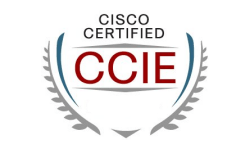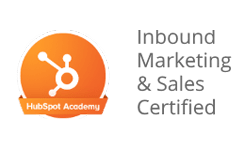Business Planning Services
EUROPE IT OUTSOURCING
DEVELOPMENT & GROWTH MARKETING COMPANY


Business planning services are vital to business success, if you have a business or you are planning to start a new business, here are the major steps you must follow:
1- Find the best business idea for you.
2- Conduct a market research for your business idea.
3- Set your business goal.
4- Set your financial plan.
5- Set your marketing plan.
6- Build your team.
If you still thinking of running a new business, remember that a successful business must have passion, skills, and good planning. All the other things will come by time. Business is found to fill a need and this need people will pay to have it filled.
Why do we choose certain business’ services and products?
A good combination of these factors will produce a product or a service that will definitely be successful, and here is an example: Millions of people choose McDonald’s because they save time “This meal only takes 5 minutes to prepare”, they save money “This meal costs less”, they overcome fears “They aren’t afraid that their kids will not like it” They will have pleasure. “It tastes good for them”, and they avoid pain. “they know eating it once a week won’t hurt them”.
Another Important point to know that you do not need millions of customers to success, many companies are serving only a few customers and they are making a good profit. If you do not have a business idea just search the net for the term “business ideas” and you will come up with 100’s of ideas and remember that a good business planning with the required passion and skills are what you need to have a successful business.

Understanding of social, cultural and economic context in which you’re trading is crucial and it makes no difference what sector you occupy. You’ll need to know about the local area, what your competition is, and what people will be prepared to pay for your product or service. But understanding your market provides a set of benefits for you.
Market research will help you to understand your customers, familiarize yourself with the competition and get to know what people are prepared to pay for your product or service. A market research aims to understand the reasons consumers will buy your product. It studies such things as consumer behavior, emphasizing on how cultural, societal and personal factors influence that behavior.
Generally, successful businesses undertake market research on a regular basis to achieve several results. They are aimed at:
● Identifying potential new customers
● Learning more about existing customers
● Informing their decisions regarding existing and new products or services
● Better understanding their competitors
● Testing new markets
● Identifying performance, pricing or promotion opportunities
Market research can be split into two varieties: primary and secondary.Primary research studies customers directly, while secondary research studies information that others have gathered about customers.
Primary research refers to information gathered from original sources such as:
● Surveys
● Face-to-face interviews
● Focus groups
● Customer feedback
● Questionnaires
● Online polls with randomly selected members of the target group
Secondary research is information and data that has already been collected and analyzed by other sources such as:
● Industry and trade publications
● Social media and websites
● Marketing and consumer lists
● Blogs
The types of information you collect through these sources may be quantitative or qualitative.
Qualitative information measures the values, attitudes, and views of a particular sample. This type of information is useful if you want to understand why people buy your products, how they respond to your advertising or their perceptions of your brand.
Quantitative information is based on statistics and may be used to predict market penetration, future earnings etc.
There are basic questions you’ll need to answer when performing your market research:
Who are your customers? Try to take into account their age, occupation, income, lifestyle, educational attainment, etc.
What would they like to buy? Describe their buying habits relating to your product or service, including how much they buy, their favored suppliers, the most popular features and the predominant price points.
What is the purpose of their buying? This one may be very difficult to answer because it’s impossible to get into your buyer’s head. But try to suggest a set of motivators for them to buy your product or service.
What will make them buy from you? Although some of these questions may seem difficult, you’d be surprised at the detailed information that’s available about markets, sales figures and consumer buying motivations.

What is a business goal?
A goal is a simple, realistic path from where your business is right now to where you want it to be.
Why does a business company need to have a goal?
● Well-chosen goals and objectives point a new business in the right direction
● Keep an established company on the right track.
● Provide direction, motivation and a clear way to measure your progress.
● They help improve your overall effectiveness as a company — whether you want to increase your share of the market, for example, or improve your customer service.
What’s the difference between a business goal and objective?
● Goals tell you where you want to go; objectives tell you exactly how to get there.
● Goals can increase your effectiveness; objectives back your goals and make you more efficient.
● Goals are typically described in words; objectives often come with numbers and specific dates.
What are the types of goals?
There are two perspectives on setting goals for your business. Depending on your strategy and vision they can be Short-Term and Long-Term Aims.
Start by distinguishing your long-term goals from your short-term ones.Your long-term goals should have a timeline of about three to five years.Your long-term aims should articulate your company’s mission statement, reflecting the reason your company was founded. Goals of such a type usually fall within four general areas: service, social, profit, or growth:
• Service – Goals related to improving customer service satisfaction or customer retention.
• Social – Goals that focus on giving back to the community, through philanthropy or volunteer organizations, for example.
• Profit – Goals set to increase profits by a certain percentage.
• Growth – Goals related to the expansion of the company, through new employees, for instance.
As soon as you have set plan for a long-term, it’s time to figure out how to get there. Short-term objectives for accomplishing your long-term goals can be described as “smart” ones.
• Specific. In order to work, objectives need to be concrete (not as abstract as your long-term aims) and highly detailed.
• Measurable. Put a figure or value, such as a dollar amount or percentage, to the objective.
• Action-oriented. Figure out which actions need to be taken by which people, and when.
• Realistic. Make goals challenging, but consider your resources so that you can actually achieve them reasonably.
• Time specific. Set a deadline to keep things on track.

Whatever entity you choose, make sure you will keep the funds separate from your personal accounts. This is a big mistake that makes tax time and financials so confusing. Get a holding place you can keep your money separated from your personal accounts.
You also need to determine a budget to get started and how much you’ll be able to spend. If you’re self-funding, be realistic about numbers and whatever you anticipate your budget to be. Your burn rate is how much cash you’re spending a month over month. It’s an important number for you to figure out to determine how long you can stay in business before you need to turn a profit.
You should set up your business with profitability in mind the first 30 to 90 days. It’s possible. But have a budget reserve so you can survive if things go leaner than expected.
One-time start-up costs: Every business faces a long list of items and services that you have to spend money on start-up costs, which are items you spend money on only once just to get up and running — everything from a business license, start-up furnishings and equipment, and introductory marketing materials to that Grand Opening promotion you’ve planned.
Regular monthly expenses: After you’re open for business, you have all sorts of ongoing expenses to deal with, from paying salaries to buying supplies. Over time, of course, you expect your sales revenue to cover these expenses. But that situation doesn’t happen overnight, so you have to set aside funds with which to pay the bills in the early tough-sledding period. Having a three- to six-month cushion is a good place to start, but how long you’ll need a cushion depends on what business you’re in.
The Components of a Financial Section, Ink
Start with a sales forecast. Set up a spreadsheet projecting your sales over the course of three years. Set up different sections for different lines of sales and columns for every month for the first year and either on a monthly or quarterly basis for the second and third years.
Create an expenses budget. You’re going to need to understand how much it’s going to cost you to actually make the sales you have forecast. Berry likes to differentiate between fixed costs (i.e., rent and payroll) and variable costs (i.e., most advertising and promotional expenses) because it’s a good thing for a business to know. “Lower fixed costs mean less risk, which might be theoretical in business schools but are very concrete when you have rent and payroll checks to sign,” Berry says.
Develop a cash-flow statement. This is the statement that shows physical dollars moving in and out of the business. “Cash flow is king,” Pinson says. You base this partly on your sales forecasts, balance sheet items, and other assumptions. If you are operating an existing business, you should have historical documents, such as profit and loss statements and balance sheets from years past to base these forecasts on. If you are starting a new business and do not have these historical financial statements, you start by projecting a cash-flow statement broken down into 12 months.
Income projections. This is your pro forma profit and loss statement, detailing forecasts for your business for the coming three years. Use the numbers that you put in your sales forecast, expense projections, and cash flow statement. “Sales, lest cost of sales, is gross margin,” Berry says. “Gross margin, less expenses, interest, and taxes, is net profit.”
Deal with assets and liabilities. You also need a projected balance sheet. You have to deal with assets and liabilities that aren’t in the profits and loss statement and project the net worth of your business at the end of the fiscal year. Some of those are obvious and affect you at only the beginning, like startup assets. A lot are not obvious. “Interest is in the profit and loss, but repayment of principle isn’t,” the way to compile this is to start with assets and estimate what you’ll have on hand, month by month for cash, accounts receivable (money owed to you), inventory if you have it, and substantial assets like land, buildings, and equipment. Then figure out what you have as liabilities–meaning debts. That’s money you owe because you haven’t paid bills (which is called accounts payable) and the debts you have because of outstanding loans.
Breakeven analysis. The breakeven point, Pinson says, is when your business’s expenses match your sales or service volume. The three-year income projection will enable you to undertake this analysis. “If your business is viable, at a certain period of time your overall revenue will exceed your overall expenses, including interest.” This is an important analysis for potential investors, who want to know that they are investing in a fast-growing business with an exit strategy.

No need to say that today the majority of relationships is built on information. No matter what sphere of work we are talking about, it is all about possessing some information, sharing it, selling it, discussing it, offering it as a product or service.
So no matter what niche you occupy in business, it won’t cause any trouble to tell about your business. Make it global. Use the internet for that. That’s why you need to create a website which will perfectly represent you as an owner, and your company, its goals, perspectives, benefits.
A website means securing an URL. Popular domain sites today offer lots of possibilities to search for the website domain address of your choice and purchase it for a small amount of money. If you’re starting an online business, you can tie your domain to an online shopping cart and storefront for a low monthly fee, or you can build a basic website yourself on top of your URL with do-it-yourself drag-and-drop site builders for a low fee.
A company website and social media profiles are practically essential for any small business in today’s world. Create a logo that can help people easily identify your brand, and be consistent in using it across all of your platforms. Use social media to spread the word about your new company. You can even use social media as a promotional tool to offer coupons and discounts to followers once you launch. Be sure to also keep these digital assets up to date with relevant, interesting content about your business and industry.
You will need a team to create the following:
You can save 1000’s of dollars and hours by outsourcing your marketing to us, please read more about our
Outsourcing Digital Marketing Services
Running a business can be overwhelming, and you’re probably not going to be able to do it all on your own. Unless you’re planning to be your only employee, you’re going to need to hire a great team to get your company off the ground.
Your product is built by people. Identifying your founding team, understanding what gaps exist, and determining how and when you will address them should be the top priority. Figuring out how the team will work together is equally important. Defining roles and responsibility, a division of labor, how to give feedback, or how to work together when not everyone is in the same room will save you a lot of headaches down the line.
Except for creating a loyal team, collaborating with more established brands in your industry is a great way to achieve growth. Reach out to other companies or even influential bloggers and ask for some promotion in exchange for a free product sample or service. Partner with a charity organization and volunteer some of your time or products to get your name out there.
Your launch and first sales are only the beginning of your task as an entrepreneur. In order to make a profit and stay afloat, you always need to be growing your business. It’s going to take time and effort, but you’ll get out of your business what you put into it.
Keep in mind, outsourcing your non-business core tasks will save you time, money, and will leverage the quality.
Please, read more about our outsourcing services.
We offer development and marketing solutions cover all business' needs.
Run by certified professionals
Trusted by top development and marketing companies in West Europe and North America
Save & gain a competitive edge.
Premium services at affordable East European rates, our clients save big without compromising on quality.
Outsource & save 1000's of hours
We handle development, marketing, design, recruiting, and training while you save money and hours.
We cover all digital needs
Web, software, and mobile app development. All digital marketing and sales channels
Crystal-clear communication
Clear plans, transparent pricing, and all services included. Every step of the work fully explained
We value partnership
We deliver. Our partners resell our services at double the price—and take all the credit. Everyone wins
Guaranteed Growth in 4 Months. 15+ Marketing Services Combined and Save up to 60%. No Long-Term Contracts.
Implemented effective strategies to reach your business goals
Tailored-maid user-centered websites that convert and engage
Be found & get free quality leads from search engines, long-lasting results
Be found & get instant quality leads from search engines, quick results
Social presence attracts new customers and builds trust, reach people & engage
Automated workflows that improve targeting, nurturing, conversion and growth
Drives results with messages that increase opens, clicks, leads and revenue
Well-written contents that sell, attract, and show quality
Quality designs that customers love to see, watch, save and share
Builds trust with content that boosts awareness, engagement, loyalty and sales
We take care of updating your websites' contents, security and performance
We ensure your safe, engaging, and responsive digital presence
Got a new project, or looking to grow your business?
Let’s turn your vision into reality!
Get in touch
100+ websites developed . 370M website visits . 800K quality leads . 140K sales . 45K paid subscribers & users
How does Europe IT Outsourcing company help your business to grow? Certified and expert digital marketers, web developers, web designers, UX specialists, SEO specialists, PPC specialists, social media specialists, inbound markers, copywriters and business consultants will team-up and put all their knowledge and experience to grow your business.











